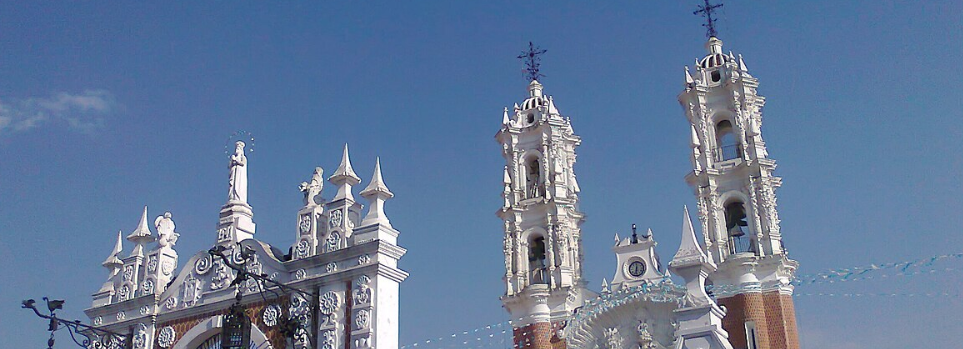Basilica of Ocotlán
One of the most splendid examples of the Mexican Baroque, and the seat of all kinds of legends and traditions, it's still just a few minutes from the center of Tlaxcala.

The Basilica of Our Lady of Ocotlán is the easily one of the most important religious sites in the metro Tlaxcala region. Second only to the cathedral of Tlaxcala, it was long a pilgrimage site and the base of legends and lore that extends into many other parts of the country even today.
The legends holds that in the spring of 1541, a young indigenous man named Juan Diego met a woman in a pine forest on the western slope of the San Lorenzo Hill. The woman asked where he was going and he replied that he was seeking water for those suffering from a plague then ravaging the population. The woman led him to a water source in the ravine, and when Juan Diego returned with this water, whoever drank it was immediately cured. He reported these occurrences and when people returned again from the spring, they carried an image of the woman which was to be placed in the chapel of San Lorenzo.
Later Franciscans visiting the area found a burning oak tree. Inside was another statue of the Virgin Mary. This was placed in the chapel and remains there to this day. The statue is almost an afterthought today within what is easily one of the most dramatically decorated interiors in the area.
The complex itself is just outside of Tlaxcala and a striking example of the Mexican Baroque and even from a distance it seems to shimmer with a beauty that is unique and un-rivalled. The 26 inverted arches of the atrium wall have been replicated throughout much of the surrounding town. The entire facade was built and covered between 1760 and 1790. Considered the foremost example of the Churrigueresque style, it is flanked by two towers of 33 meters each. The altarpiece is replete with 17 full-length statues, 18 angels, and 33 small figurines. These include cherubs, floating child angels, and young angels in colored robes.
The "El Pocito" well is about 400 meters from the sanctuary grounds (down the Agua Santa lane to the south west of the sanctuary entrance). This is the origin of the red ducks motif still visible in the area. The duck were responsible, in local lore, for carrying water from the well to the faithful.
The fact is, one could walk from the center of Tlaxcala to the Ocotlán Basilica in about 25 minutes. But considering the uphill journey, up the Ocotlán hill, most visitors today will prefer to take a taxi. The drive is only about 10 minutes.